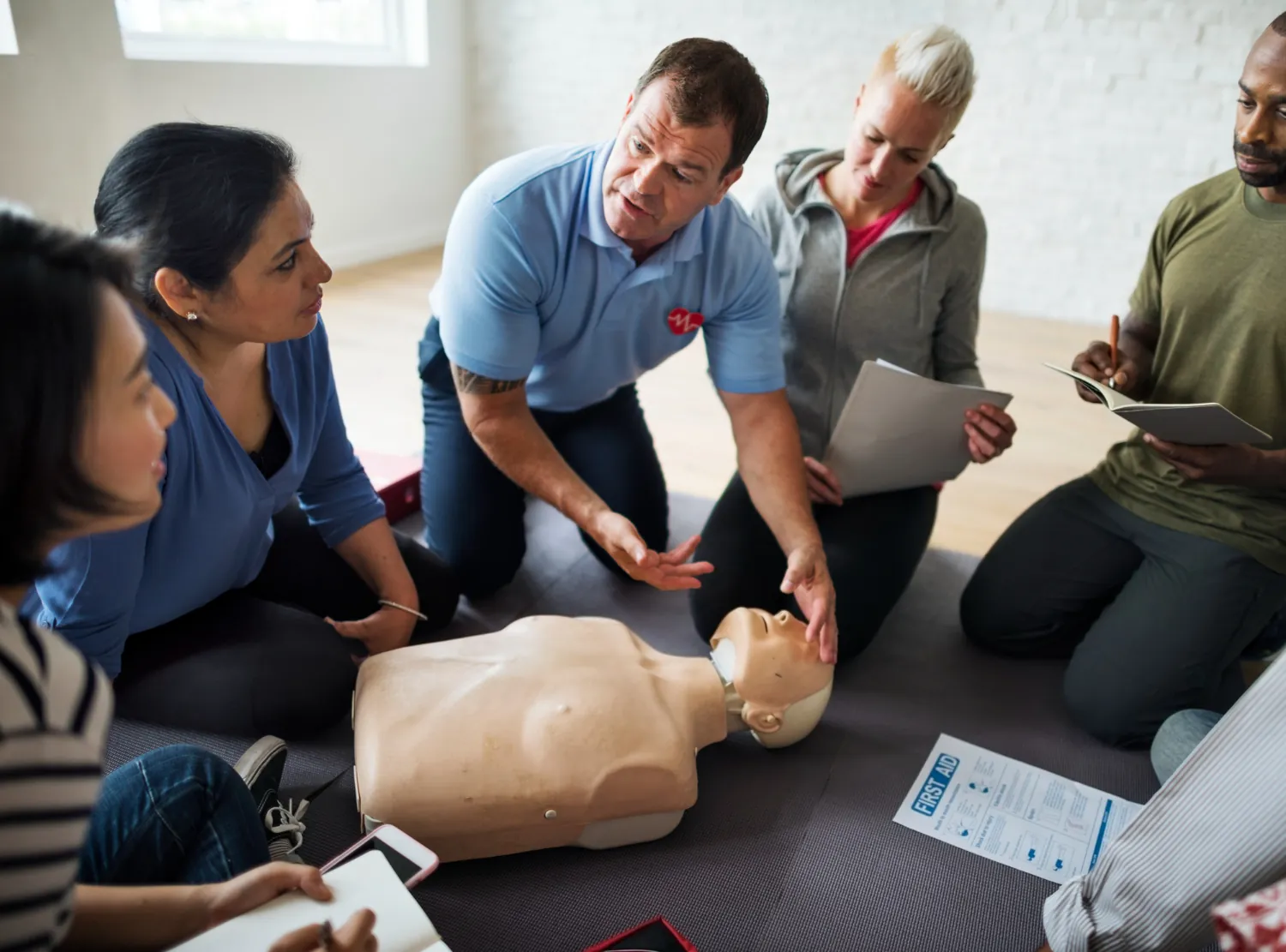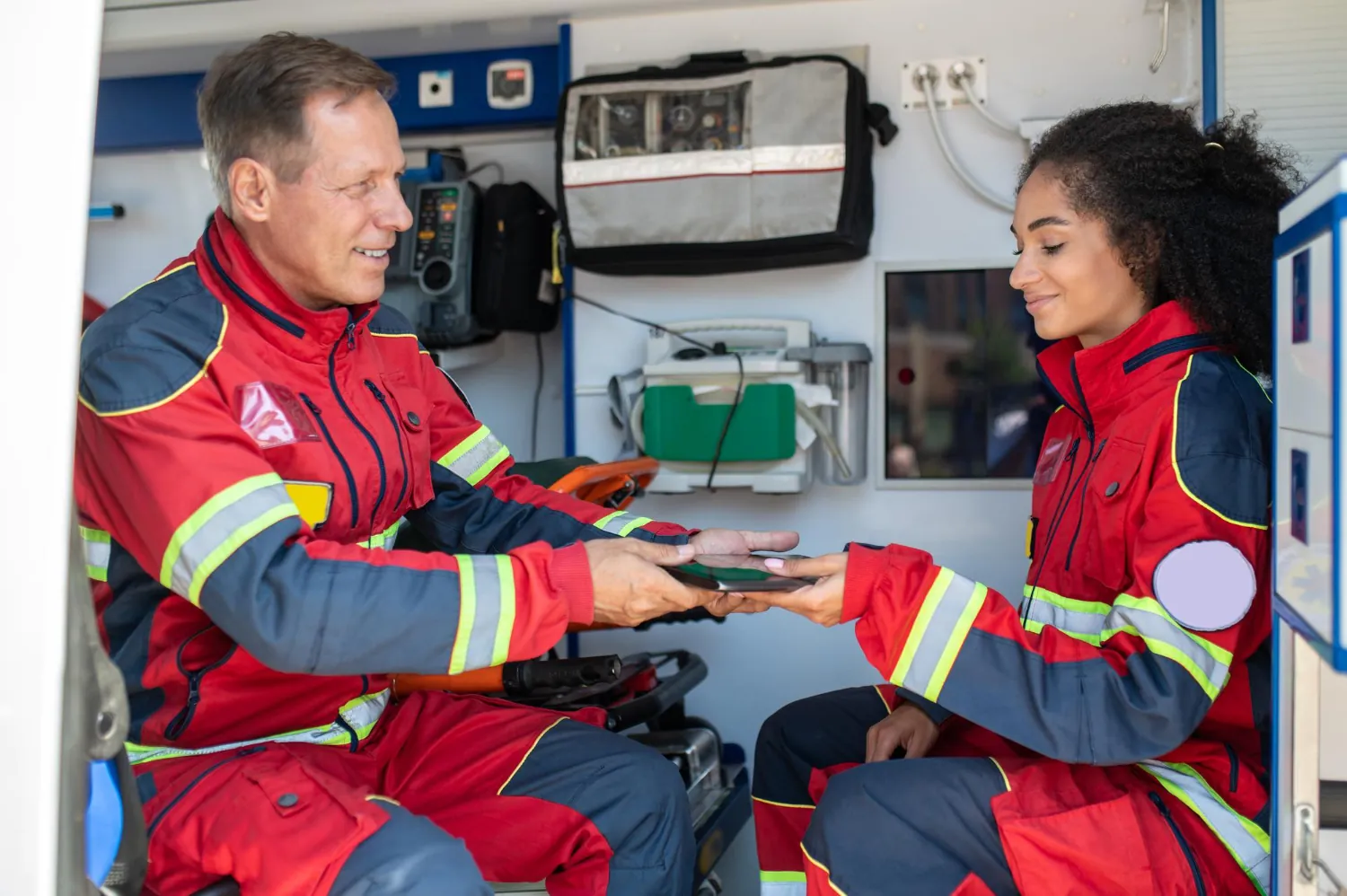Navigating The Modern Recruitment Maze: Overcoming Challenges in Hiring Paramedics

One of the biggest hurdles in today's healthcare landscape is recruitment. With the ever-changing demands of ambulance services and fire departments, this challenge extends to emergency response, too.
While many of the challenges overlap, there are some that are unique to the EMS industry. Here are the six biggest challenges to building a strong EMS team and the strategies to overcome them.
1. A Shortage of Qualified Paramedics
Our first obstacle is the rising demand for paramedics and a decreasing pool of qualified candidates. Years ago, it could take months for a paramedic student to get a field internship or a paramedic graduate to get a job because so many people were entering the industry. The pendulum has swung in the other direction. Now, rather than having hundreds of paramedics apply for one job at a fire department, we have multiple openings with only a handful of applicants. From an administrator's standpoint, this paramedic shortage makes it extremely difficult to find qualified candidates. Some agencies are making exceptions in the background and psychological exams for candidates because the need for emergency services is so great. However, lowering qualifying standards is a band-aid fix for a bigger problem.
The challenge of hiring paramedics has also created a very competitive marketplace. The limited pool of paramedic candidates intensifies competition among employers. We're seeing more and more "Lateral Paramedic" recruitments, where larger, more desirable, and higher-paying agencies hire paramedics from smaller agencies that simply can't afford to offer the same compensation packages.
Overcoming Strategy: Collaboration
One way to overcome the lack of potential employees is to collaborate with educational institutions to craft targeted paramedic training programs. Find a local medical training program that offers classes like ACLS, PALS, and other courses paramedics need to be certified in and form a partnership. Working with community colleges and universities can help establish pipelines for paramedic recruitment. If possible, host interns within your organization to create mentorships and form bonds with students before they're licensed.
Additionally, make your agency attractive to potential employees by establishing good working relationships with other agencies and paramedic interns. There have been instances where one agency treats another as inferior, talks down to personnel during emergencies, or otherwise creates a separation between stations, which can make qualified paramedics want to avoid working for you. Maintain a positive, happy environment for all employees.
2. High Turnover Rates
We know that being a first responder is both physically and emotionally challenging. Paramedics frequently encounter high-stress situations that increase turnover rates. Meanwhile, the shortage of paramedics in the workforce often creates an opportunity for a lot of overtime. While extra hours at a time-and-a-half rate can be enticing to staff looking to make some extra money, it also contributes to burnout, PTSD, and fatigue. All these increase the risk of mistakes that can have severe consequences for the paramedic and the patient. Challenges in achieving work-life balance and job dissatisfaction contribute to a revolving door of paramedic personnel.
Overcoming Strategy: Take Care of Your Personnel
There are ways to prevent high turnover rates, even in emergency medicine. Start by creating mental health programs to address burnout and PTSD prevention and treatment. Be sure to keep psychological and physical health resources available and ensure employees know where to get help.
Implementing a cap on the maximum consecutive hours a paramedic can work and a minimum amount of time off before an employee can return to work will also aid in reducing stress-related turnover.
Engaging with your employees, listening to them, and soliciting feedback on their job satisfaction is essential. Being a paramedic or EMT is inherently stressful, so if there are unnecessary contributing factors to stress on the job, you'll risk losing that employee to another organization or having them simply decide to leave emergency medicine altogether.
3. Technological Advancements
Integrating technology in emergency medical services means paramedics must be digitally adept. Technology has improved our industry, so adopting new devices or computer-based services is essential to keeping your organization operating at industry standards. However, even for qualified paramedics, the transition can be hard.
Some paramedics may face difficulties adjusting to new technologies and electronic health record systems. And because there are so few paramedics looking for work, the chance of hiring newly graduated paramedics with skills in new technology is even lower. Newer generations have grown up with technology and don't know a world without it, but your Generation X workforce has a different learning curve and may be more resistant.
Overcoming Strategy: Use Technology Advancements
Your agency needs to provide ongoing training on the latest technologies and digital tools. Because these skills can be perishable, continuing education and competency assessments are important.
Try collaborating with technology vendors to offer user-friendly solutions. A vendor should be personable and available to ensure you have what you need to use their program. It is a competitive market with digital solutions, so if you're having trouble with a vendor, don't worry – someone out there will be happy to take your business and assist you with your needs.
Encourage a culture of continuous learning to cultivate tech-savvy paramedics. For example, LogRx brings digital medication tracking and management tools to an area that often relies on paper. The advantage of our technology is that it makes the field personnel's job easier and more efficient. LogRx reduces staff time, increases efficiency, and improves accuracy in accountability; in essence, providing you with another person to do your inventory management. This service reduces a lot of stress (and headaches) for both emergency workers and administrators. You need paramedics who can adapt and are willing to learn vital digital technology.
4. Changing Demographics
Speaking of Generation X, the paramedic workforce is aging, resulting in retirements, potential skill gaps, and, as mentioned, the inability to use digital services. Newer generations don't always set their sights on spending an entire career with one organization; they move around more than previous generations. So, it's important to always strive to make your organization attractive to both new and experienced paramedics.
At the same time, ensuring a diverse paramedic workforce reflective of the communities they serve during a paramedic shortage creates another challenge.
Overcoming Strategy: Educate and Diversify
Begin by developing mentorship programs to transfer knowledge from experienced paramedics to new recruits. A friendly atmosphere will create a more welcoming environment and help newer EMTs and paramedics with anxiety about their first EMS position.
Then, collaborate with community organizations to promote inclusivity in paramedic recruitment. EMS-based associations and labor groups are great resources for staying in touch with changing trends and assisting with recruitment strategies.
5. Cost Constraints
Tight budgets may restrict resources for recruitment efforts and competitive compensation. Economic downturns can also impact the ability to offer competitive salaries and benefits to the few qualified paramedics looking for a position.
Overcoming Strategy: Develop Partnerships and Outside Funding
Explore public-private partnerships to secure additional funding for recruitment initiatives. These can be contentious in some communities, but if you risk losing staff due to funding, you must do what's right for your organization and your community. The key is to be transparent with your operations and budget and only ask for the funds you need – no more, no less.
Also, start advocating for increased funding for emergency medical services at the local and state levels. Stay involved with lobbying associations at all levels of government.
You can also leverage non-monetary incentives, such as professional development opportunities and flexible schedules. Make your organization attractive in ways that are not necessarily financially based. Creativity is essential to make the most of your resources.
6. Outdated Recruitment Strategies
Sole reliance on traditional recruitment methods may fail to reach the modern workforce effectively. Failure to leverage digital platforms for recruitment and employer branding can be significantly limiting when it comes to recruitment.
Overcoming Strategy: Get Online
Once again, utilizing modern technology can help you stand out from the rest. Embrace modern recruitment platforms and social media to reach a broader audience. An agency that doesn't use social media is missing out. While social media takes time to manage, it's an excellent opportunity to reach modern generations who use it daily.
Increase viewership by developing an engaging online presence, including a user-friendly website and active participation in social media. Assign a team member as a marketer to build up your organization's credibility and brand name.
Remember to utilize data analytics to assess the effectiveness of recruitment strategies and make data-driven adjustments. Tracking data points in your organization, such as where different candidates find out about your job announcement, can help guide your future recruitment efforts. The more data you can collect, the better. Sometimes, you don't even realize the value of data points until they are combined with other factors.
Overcoming the challenges of hiring paramedics in ambulance services necessitates a strategic and adaptive approach. Organizations can foster a resilient workforce capable of delivering high-quality emergency medical services by addressing the unique factors influencing paramedic recruitment, from technological advancements to demographic shifts. Implementing these strategies will attract and retain skilled paramedics, even during a paramedic shortage, and contribute to the overall improvement of emergency medical services in the communities they serve.
Categories
Recent Posts
- LogRx and Knox: How LogRx Integrates with EMS Medication Lockboxes
- Connecting Community and EMS: 7 EMS Community Outreach Ideas
- Projecting Professionalism: Why EMS Uniforms Matter
- EMT Off-Duty Response: What You Should Carry Everywhere
- Basic EMT Trauma Assessment Scenarios: Gearing Up for Certification

































